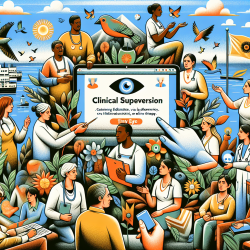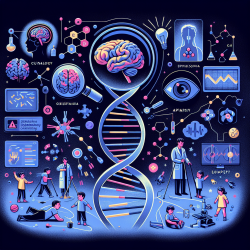Empowering Change: Enhancing Visual Perception Skills in Adolescents with a History of Central Coordination Disorder

The journey of a child's development is complex and often influenced by various factors. For adolescents with a history of central coordination disorder (CCD), early intervention plays a crucial role in normalizing their psychomotor development and preventing cognitive impairments later in life. This blog explores the findings from the study titled "Assessment of visual perception in adolescents with a history of central coordination disorder in early life – 15-year follow-up study" and how practitioners can leverage these insights to enhance their therapeutic approaches.
Understanding Central Coordination Disorder and Visual Perception
Central coordination disorder in early life is characterized by abnormalities in psychomotor development due to central nervous system damage. These disturbances can manifest as visual perception disorders, affecting the ability to read, write, and perform other intellectual tasks. The study by Kiebzak et al. aimed to determine if early therapy according to Vojta's method, supplemented with elements of sensory integration (S-I) and neuro-developmental treatment (NDT)/Bobath approaches, could positively influence visual perception development in adolescents with a history of CCD.
Key Findings from the Study
The study involved 44 participants aged 15-16 years, including 19 diagnosed with moderate or severe CCD in the neonatal period and 25 healthy peers without developmental psychomotor disturbances. The results revealed that:
- Adolescents with a history of CCD did not differ in visual perception levels from their peers without such a history.
- Early therapy focusing on normalizing muscle tone and postural responses contributed to the optimal developmental potential of these adolescents.
- Participants who received early intervention showed no significant cognitive impairments related to visual perception compared to their healthy peers.
Implications for Practitioners
For practitioners in the field of online therapy and special education, these findings underscore the importance of early intervention and comprehensive therapeutic approaches. Here are some practical steps to consider:
- Early Detection and Intervention: Identifying signs of CCD and initiating therapy early can prevent long-term cognitive impairments.
- Integrated Therapeutic Approaches: Combining Vojta's method with S-I and NDT/Bobath approaches can normalize psychomotor development effectively.
- Continuous Monitoring: Regular assessment and monitoring of therapy progress ensure that interventions are tailored to the child's evolving needs.
Encouraging Further Research
While the study provides valuable insights, further research is essential to explore the long-term impacts of early therapeutic interventions on various cognitive and motor skills. Practitioners are encouraged to stay updated with ongoing research and contribute to the body of knowledge by sharing their clinical experiences and outcomes.
Conclusion
The findings from the 15-year follow-up study highlight the potential of early therapeutic interventions in normalizing the psychomotor development of children with CCD. By adopting integrated therapeutic approaches and focusing on early intervention, practitioners can make a significant difference in the lives of these children, ensuring they reach their full developmental potential.To read the original research paper, please follow this link:
Assessment of visual perception in adolescents with a history of central coordination disorder in early life – 15-year follow-up study.
Citation: Kiebzak, W., Kowalski, I. M., Domagalska, M., Szopa, A., Dwornik, M., Kujawa, J., & Stepien, A. (2012). Assessment of visual perception in adolescents with a history of central coordination disorder in early life – 15-year follow-up study. Archives of Medical Science, 8(5), 879-885. https://doi.org/10.5114/aoms.2012.28638










